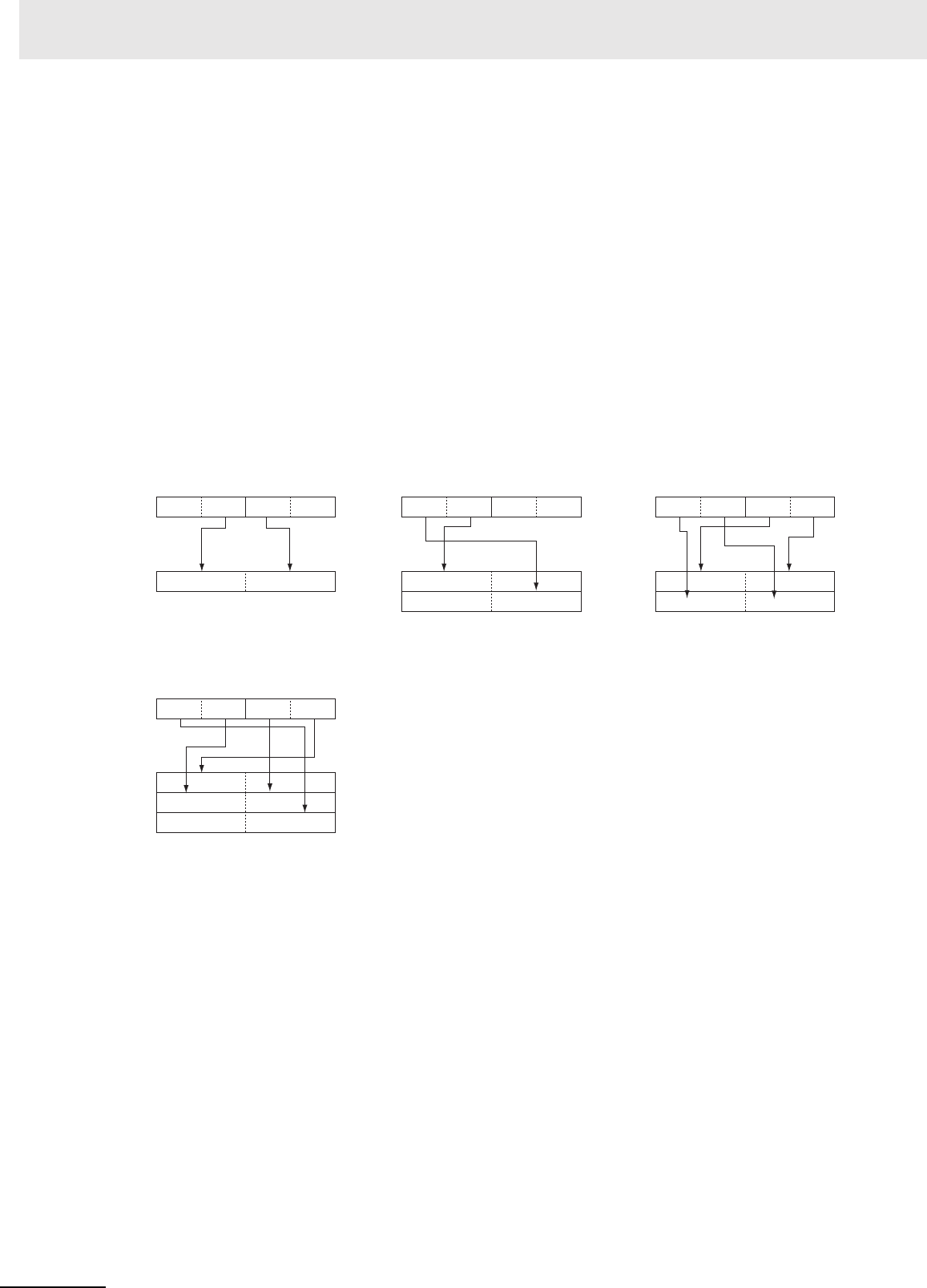
2 Instructions
2-204
CP1E CPU Unit Instructions Reference Manual(W483)
Parity
It is possible to specify the parity of the ASCII data for use in error control during data transmissions.
The leftmost bit of each ASCII character will be automatically adjusted for even, odd, or no parity.
• When no parity (0) is designated, the leftmost bit will always be zero. When even parity (1) is desig-
nated, the leftmost bit will be adjusted so that the total number of ON bits is even. When odd parity (2)
is designated, the leftmost bit of each ASCII character will be adjusted so that there is an odd number
of ON bits. The status of the parity bit does not affect the meaning of the ASCII code.
• Examples of even parity:
When adjusted for even parity, ASCII “31” (00110001) will be “B1” (10110001: parity bit turned ON to
create an even number of ON bits); ASCII “36” (00110110) will be “36” (00110110: parity bit remains
OFF because the number of ON bits is already even).
• Examples of odd parity:
When adjusted for odd parity, ASCII “36” (00110110) will be “B6” (10110110: parity bit turned ON to
create an odd number of ON bits); ASCII “46” (01000110) will be “46” (01000110: parity bit remains
OFF because the number of ON bits is already odd).
Examples of Di
Di: #0011 Di: #0112 Di: #0030
Di: #0130
Digit 3 Digit 2 Digit 1 Digit 0
Leftmost Rightmost
Digit 3 Digit 2 Digit 1 Digit 0 Digit 3 Digit 2 Digit 1 Digit 0
Leftmost
Rightmost
Leftmost Rightmost
Leftmost Rightmost
Digit 3 Digit 2 Digit 1 Digit 0
Leftmost
Rightmost
Rightmost
Leftmost
D
D
D+1
S
811
1215 0347
S
811
1215 0347
D
D+1
S
811
1215 0347
815 07 815 07 815 07
D
D+1
D+2
S
811
1215 0347
815 07


















